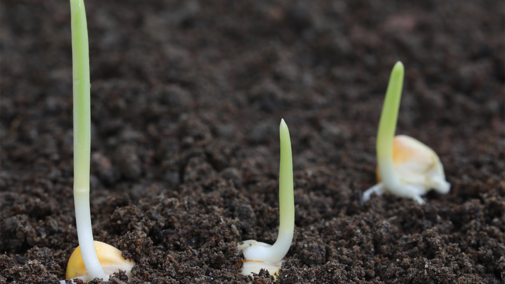With the uncertainty of when growers will get back into fields after flooded and saturated soil conditions, some may wonder at what point do they need to consider changing relative maturities with concern of late season frost risk.
The U2U GDD tool provides an excellent way to address this. It allows us to compare scenarios of hybrids and planting dates at locations across the Corn Belt and compares the current year to a 30-year normal for each location. We recommend growers and those advising growers use this tool for your specific locations and situations.
Table 1 displays some scenarios for Saunders County near Mead in eastern Nebraska. For example, a 110-day RM hybrid planted on June 5 in the Saunders County area would not mature before the average 28oF frost date of Oct. 19.
Remember, Table 1 is based on the average 28oF frost date. The U2U GDD tool provides a graphic view not only of the range of possible frost dates but also the variation in GDD accumulation over the 30 years of weather data for each location.
Here are some other brief ideas and a bit of a summary:
- Hybrids do adapt for later planting by shortening their life cycle. (See this CW story.) Fall frost represents a dead-end for crop growth and development.
- Corn growing in saturated or flooded soils, will perform poorly; similarly, “mudded-in” corn — corn planted in very wet soils — likely will not perform well.
- To minimize the risk of a premature fall frost, use earlier maturing corn hybrids.
- Earlier-season hybrids in general may yield less than full season hybrids; however, there are exceptions with specific hybrids and today’s genetics. As we learned in June of 2022 replant, short season hybrids below 100 RM performed surprisingly well.
- Later R6 dates mean wetter grain and the likelihood of increased drying costs.
- Explore options for corn silage or high moisture corn for late-planted fields.
- Killing frosts before crop maturity will reduce yields through reduced kernel weights. However, surprisingly we didn’t always see reduced test weights after the June 2022 replant situation in south-central Nebraska.
- We recommend using the U2U tool (https://mygeohub.org/groups/u2u/purdue_gdd) for your specific locations/situations.
|
Saunders County (near Mead, Nebraska) Avg 32o Frost 12 Oct | ||||||||
|---|---|---|---|---|---|---|---|---|
| Relative Maturity | 95 | 100 | 103 | 105 | 110 | 113 | ||
| Hybrid GDD to R6 | 2280 | 2401 | 2473 | 2521 | 2642 | 2715 | ||
| Planting Date | Estimated R6 Date | |||||||
| June 1 | Sept. 14 | Sept. 22 | Sept. 28 | Oct. 2 | Oct. 14 | *** | ||
| June 5 | Sept. 19 | Sept. 28 | Oct. 4 | Oct. 8 | *** | *** | ||
| June 10 | Sept. 26 | Oct. 6 | Oct. 14 | *** | *** | *** | ||
| June 15 | Oct. 4 | Oct. 18 | *** | *** | *** | *** | ||
| Dates in red print are beyond average date of a 28oF frost event. | ||||||||
| *** The crop won't mature. | ||||||||
| Data from U2U decision Support Tools, HPRCC: https://mygeohub.org/groups/u2u/purdue_gdd |
||||||||

